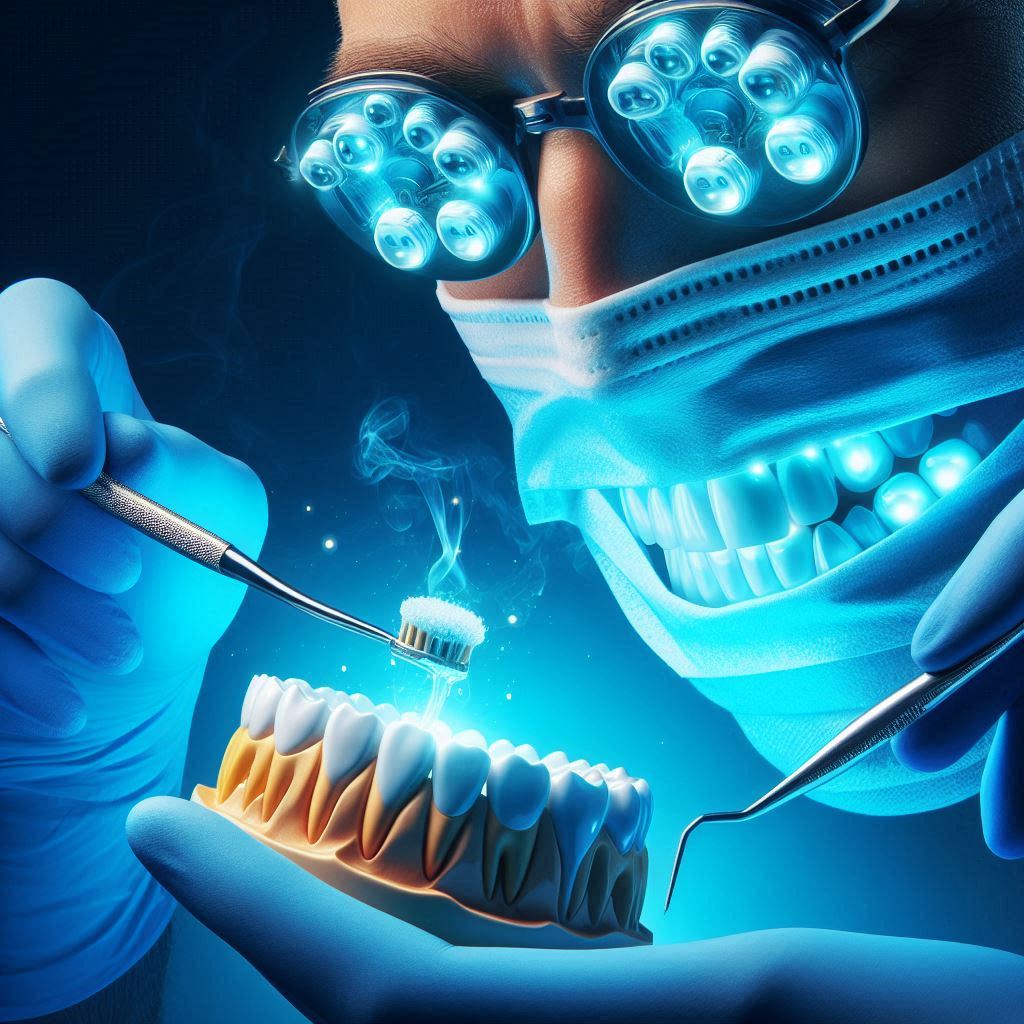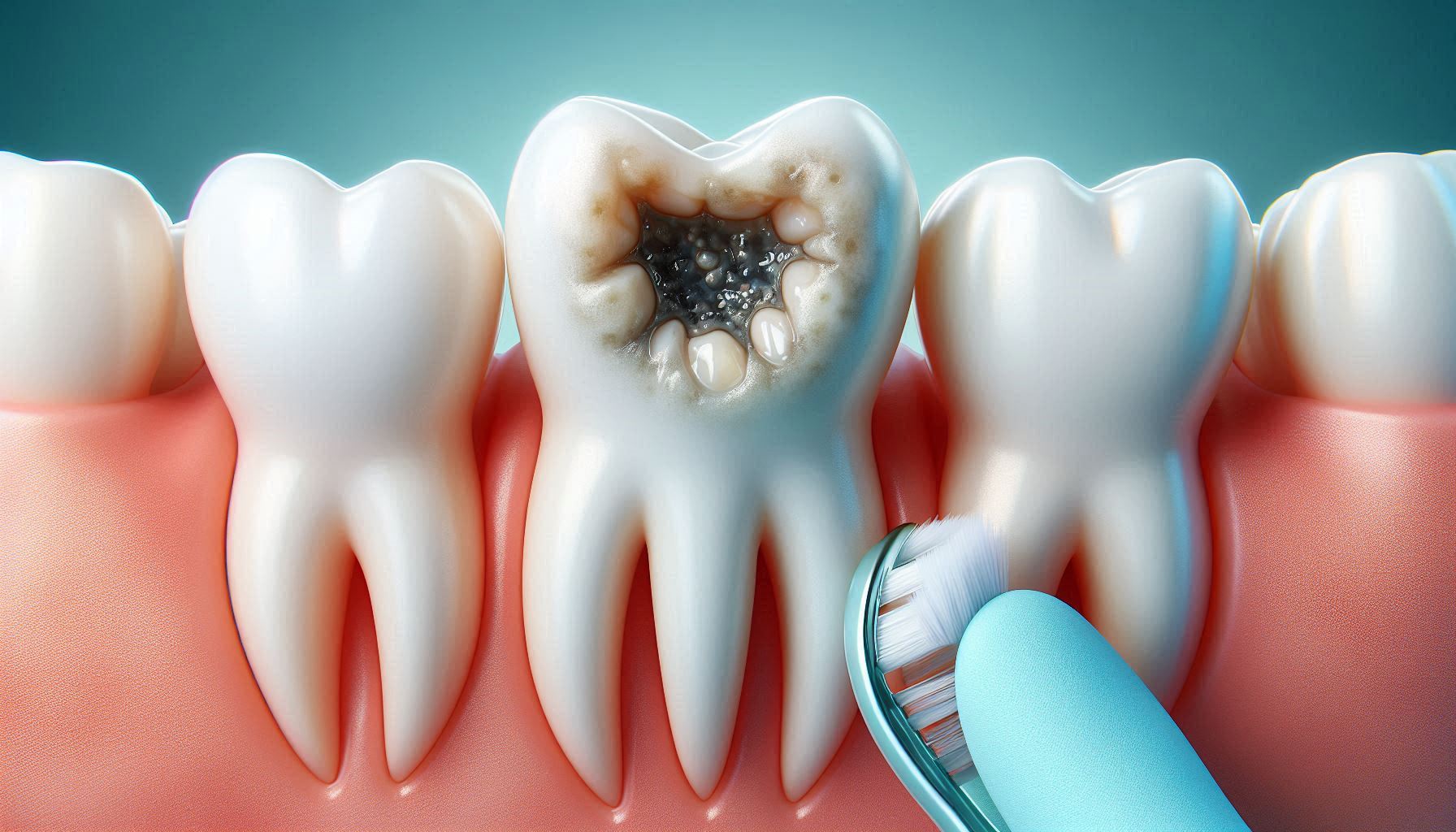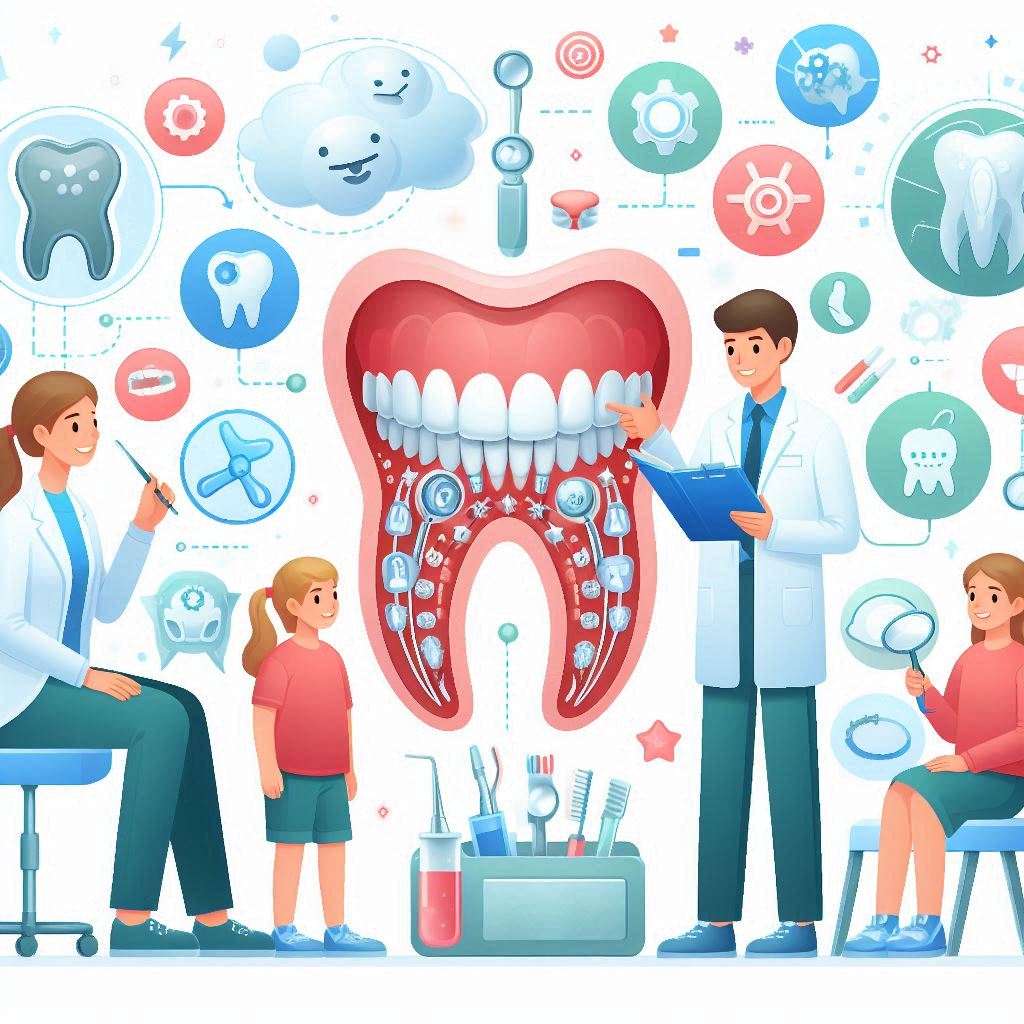Teeth whitening has become one of the most sought-after cosmetic procedures worldwide, offering individuals a way to enhance their smile, improve their confidence, and give their overall appearance a youthful boost. With billions spent annually on over-the-counter teeth whitening products and professional services, the concept of a brighter smile is both appealing and often seen as essential in modern society. However, while the benefits are clear, it’s equally important to understand the risks and the safe practices necessary to achieve those desired results.
What Is Teeth Whitening?
Teeth whitening refers to the use of various methods and products designed to lighten the color of the teeth. These methods are focused on removing stains or discolorations on the tooth enamel (the outer layer of the tooth) and either bleaching or chemically altering it to create a lighter, brighter appearance. Whitening works primarily by oxidizing the stains on the enamel, breaking down the compounds causing discoloration.
There are two main types of stains that can affect the color of your teeth:
- Extrinsic Stains: These are surface stains caused by substances like coffee, tea, tobacco, red wine, and other dark-colored food and beverages. These stains are typically easier to treat and can be removed or lightened with the right whitening methods.
- Intrinsic Stains: These stains are located within the tooth enamel itself, often caused by aging, genetics, or medications like tetracycline. Intrinsic stains are more challenging to treat and may require more specialized whitening procedures or alternative treatments like veneers.
Teeth Whitening Methods:
- At-Home Products: These include whitening toothpaste, whitening strips, gels, and trays that you can use without visiting a dentist. They contain ingredients like hydrogen peroxide or carbamide peroxide to lighten the teeth.
- In-Office Treatments: Professional whitening treatments, often performed by a dentist, utilize higher concentrations of bleaching agents and can deliver more noticeable results in less time.
- Natural Remedies: There is also a growing trend of using natural or alternative methods for whitening, such as activated charcoal or baking soda. However, their effectiveness and safety may not be as scientifically backed compared to professional treatments.
The Pros of Teeth Whitening
Teeth whitening is undoubtedly an appealing cosmetic procedure, especially given its accessibility, affordability, and significant impact on a person’s appearance. Below are the key advantages of teeth whitening:
Enhanced Aesthetic Appeal
One of the most significant advantages of teeth whitening is its ability to greatly enhance the appearance of your smile, which can lead to a significant boost in self-esteem. A bright, white smile is often linked to health, vitality, and youth, and people naturally associate it with overall well-being. A whiter smile can have a profound impact on your confidence, making you feel more attractive and self-assured. Additionally, it can improve how others perceive you, as individuals with brighter teeth are often viewed as more approachable and polished. This boost in self-confidence can positively influence both your social life and professional interactions, helping you make a lasting, positive impression on others.
Quick and Convenient
Teeth whitening offers a quick and easy solution to achieving a brighter smile, particularly when using over-the-counter products. For many individuals, noticeable results can be seen within just a few days or weeks, depending on the extent of staining. Professional treatments, such as in-office whitening procedures, can provide immediate results in a single session, making them ideal for those with time-sensitive needs.
At-home whitening products, including strips, gels, and whitening toothpastes, are incredibly convenient as they can be incorporated into your daily routine with minimal effort. These products are readily available without requiring a dentist’s visit, making them accessible to anyone seeking an affordable and hassle-free whitening solution. Many people appreciate the ability to whiten their teeth at home without disrupting their busy schedules or needing to make an appointment with a dental professional.
Non-Invasive and Painless
Teeth whitening stands out as a non-invasive and painless procedure compared to many other cosmetic dental treatments. There are no surgical interventions, needles, or recovery time required. Whether opting for a professional treatment or over-the-counter whitening products, the process is designed to be easy and comfortable. For professional treatments, any discomfort is usually minimal and temporary. Over-the-counter products, when used as directed, typically carry a low risk of causing significant pain or irritation. This makes teeth whitening a more approachable option for individuals who may be hesitant about more invasive dental procedures.
Cost-Effective
Teeth whitening is one of the most budget-friendly cosmetic dental options available. Compared to expensive procedures like crowns, veneers, or dental implants, whitening is relatively affordable. At-home whitening products such as strips, gels, and specialized toothpaste are significantly less expensive than in-office treatments, making them an attractive option for individuals on a budget. While professional whitening can be pricier, it still costs much less than other permanent smile-enhancing treatments. For those seeking a quick and cost-effective way to improve their smile, teeth whitening offers excellent value.
Long-Lasting Results with Proper Maintenance
The results of teeth whitening, particularly when done professionally, can last for a considerable period—often up to a year or more—depending on the individual’s oral care habits. Maintaining a consistent oral hygiene routine, which includes regular brushing and flossing, can help preserve your bright smile. Lifestyle factors, such as avoiding staining foods and drinks like coffee, red wine, or tobacco, can also extend the longevity of the whitening effects. By following these simple steps, you can maintain your radiant smile for longer, maximizing the value of your whitening treatment.
The Cons of Teeth Whitening
While the benefits of teeth whitening are clear, there are potential drawbacks that users should be aware of. These include risks to oral health and the possibility of disappointing results if not properly managed.
Tooth Sensitivity
One of the most common side effects of teeth whitening is increased tooth sensitivity. The active ingredients in whitening treatments, particularly hydrogen peroxide, can temporarily weaken the enamel, making teeth more sensitive to temperature changes. This may result in discomfort when consuming hot or cold foods and drinks. For some individuals, the sensitivity lasts only a few hours, while others may experience it for several days. It’s important to note that this sensitivity is typically temporary and should subside after the whitening process is complete.
Gum Irritation
Gum irritation is another potential side effect of whitening treatments. This can occur when the whitening product comes into contact with the gums, especially if the product is not applied correctly or if the whitening tray or strips do not fit properly. The gel may leak onto the gums, causing redness, swelling, or discomfort. While gum irritation is usually temporary, persistent irritation may require discontinuing the treatment. It’s crucial to ensure proper application and consult a dentist if irritation occurs.
Uneven Whitening Results
Teeth whitening may not always provide uniform results. Surface stains from food or beverages tend to respond better to whitening treatments, while deeper, intrinsic stains, such as those caused by aging or medication, can be more difficult to lighten. Additionally, dental restorations, such as fillings, crowns, and veneers, do not whiten with these treatments, which can create a noticeable contrast between natural teeth and dental work.
Potential Damage to Enamel
Excessive use of whitening products, particularly those with abrasive ingredients, can lead to long-term enamel damage. Thinning enamel can make teeth more susceptible to decay, increased sensitivity, and staining. To avoid this, it’s important to follow the recommended instructions and not overuse whitening products to protect your enamel and maintain overall dental health.
Expensive Professional Treatments
While home whitening products are cost-effective, professional in-office treatments can be expensive, often ranging from several hundred to over a thousand dollars per session. This can make professional whitening less accessible for those on a budget, unless they are seeking immediate or more dramatic results.
Safe Practices for Teeth Whitening
While teeth whitening can be effective and safe when done correctly, there are key practices you should follow to ensure the best and safest results. By adhering to these practices, you can minimize the risks associated with whitening treatments.
Consult with a Dentist
Before starting any teeth whitening treatment, it is essential to consult with a dentist. A professional will thoroughly examine the health of your teeth and gums, identify the underlying causes of any discoloration, and recommend the most suitable whitening method for your individual needs. If you have existing oral health problems, such as cavities, gum disease, or sensitive teeth, a dentist can help you determine whether whitening is appropriate for you. Additionally, they can ensure that the whitening procedure will not worsen any underlying issues or cause additional damage to your teeth.
Choose Safe, Approved Products
When selecting a whitening product, it’s vital to choose one that is safe and effective. The market is filled with various teeth whitening products, but not all are created equally. Some products contain high concentrations of chemicals that could potentially damage your enamel or cause irritation to your gums. To avoid this, look for products that are approved by reputable organizations like the American Dental Association (ADA). ADA-approved products have been clinically tested for safety and effectiveness, providing you with peace of mind that they are safe to use on your teeth. Your dentist can also recommend specific products that align with your needs.
Follow Instructions Carefully
Whether using at-home whitening kits or undergoing professional treatments, always follow the product’s instructions carefully. Improper use or overuse of whitening products can lead to negative side effects, such as tooth sensitivity, gum irritation, or even damage to your enamel. Make sure to read all instructions provided with the product and apply it as directed. If you’re unsure about any part of the process, don’t hesitate to reach out to your dentist for clarification. This ensures that you achieve the best results without causing harm to your oral health.
Avoid Staining Foods and Drinks After Treatment
After whitening your teeth, it’s essential to avoid foods and drinks that could stain your teeth. Items like coffee, tea, red wine, and dark berries can significantly undermine the effects of your whitening treatment, causing your teeth to stain more quickly. If you do consume these foods or drinks, make sure to brush your teeth promptly afterward to reduce the risk of staining. Taking these precautions can help prolong the effects of your whitening treatment and maintain a brighter smile for longer.
Use Toothpaste for Sensitive Teeth
If you experience tooth sensitivity after whitening, consider switching to a toothpaste specifically formulated for sensitive teeth. These toothpastes often contain ingredients like potassium nitrate or strontium chloride, which help calm the nerve endings in your teeth and protect your enamel. If you continue to experience sensitivity, give your teeth some time to recover before resuming whitening treatments.
Maintain Regular Oral Hygiene
Maintaining consistent oral hygiene is vital to ensure your teeth stay healthy and white. Regardless of whether you choose to whiten your teeth, you should brush your teeth at least twice a day using fluoride toothpaste, floss daily, and visit your dentist regularly for cleanings and check-ups. Good oral hygiene not only prevents staining but also promotes overall oral health, helping you maintain a bright smile for years to come.
Conclusion
Teeth whitening is a highly effective way to enhance your smile, improve your appearance, and boost your confidence. Whether you choose at-home products or professional treatments, whitening can provide dramatic results with minimal invasiveness or discomfort. However, it’s essential to understand the potential risks, such as tooth sensitivity, gum irritation, and enamel damage. By choosing safe products, following professional advice, and practicing good oral hygiene, you can enjoy the benefits of a brighter, more radiant smile while minimizing the risks. Teeth whitening is a personal decision, and the right choice depends on your unique dental needs and goals.
For the best results, always consult with a dentist to ensure that your whitening treatment is both safe and effective. A professional evaluation will give you peace of mind knowing that you’re pursuing the right treatment for your smile. Teeth whitening can be a valuable tool for enhancing both your appearance and self-confidence, and with the right care, your smile can remain bright and beautiful for years to come!
SOURCES
American Dental Association. (2019). Tooth whitening: What you should know. Journal of the American Dental Association, 150(10), 845-855.
Baumann, M., & Smith, R. (2021). The effects of whitening products on dental enamel and sensitivity. Journal of Cosmetic Dentistry, 34(3), 105-112.
Brennan, M., Jones, L., & Clark, D. (2020). A comparison of professional and over-the-counter teeth whitening treatments: Effectiveness and safety. Journal of Dental Health, 45(4), 215-225.
Brown, S., & Carter, H. (2022). The rise in popularity of teeth whitening: Exploring the trends in consumer use of whitening products. International Journal of Cosmetic Dentistry, 18(1), 34-41.
Larsen, P., & West, R. (2020). Gum irritation and tooth sensitivity with teeth whitening treatments: A clinical analysis. Journal of Clinical Dentistry, 32(6), 257-265.
Miller, D., & Davis, J. (2021). Long-term effects of teeth whitening on enamel integrity. Journal of Dental Research, 98(7), 1289-1295.
Mitchell, A., Parker, C., & Adams, B. (2019). The safety and effectiveness of over-the-counter teeth whitening products. The Journal of the American Dental Association, 150(3), 118-123.
Robinson, F., Blake, S., & Martin, T. (2020). A comprehensive review of tooth whitening products: Efficacy and safety. Dental Clinics of North America, 64(2), 151-159.
Smith, J. A., & Thompson, R. L. (2018). Consumer trends and satisfaction with professional whitening procedures. Journal of Cosmetic Dentistry, 30(4), 49-58.
Wilson, G. H., & Harris, M. R. (2022). The impact of diet on the success of teeth whitening treatments. International Journal of Oral Hygiene, 17(2), 72-79.
Zhang, L., Yang, Y., & Zhao, J. (2021). Sensitivity and enamel damage caused by overuse of home whitening products. Journal of Dental Practice, 12(5), 60-67.
HISTORY
Current Version
February 4, 2025
Written By:
SUMMIYAH MAHMOOD




